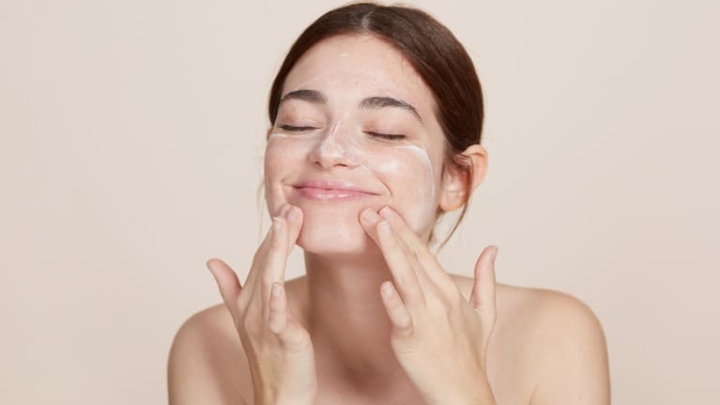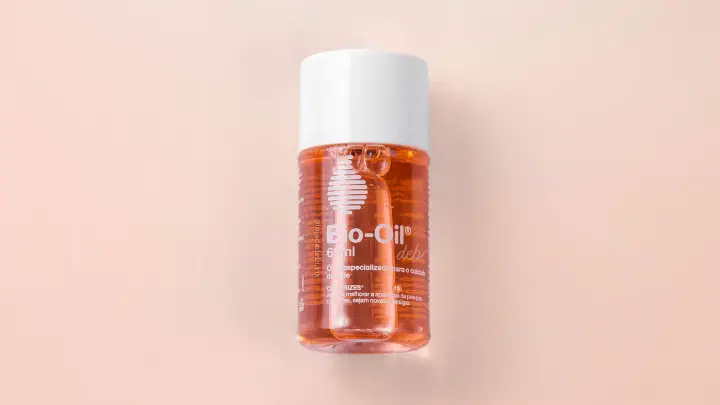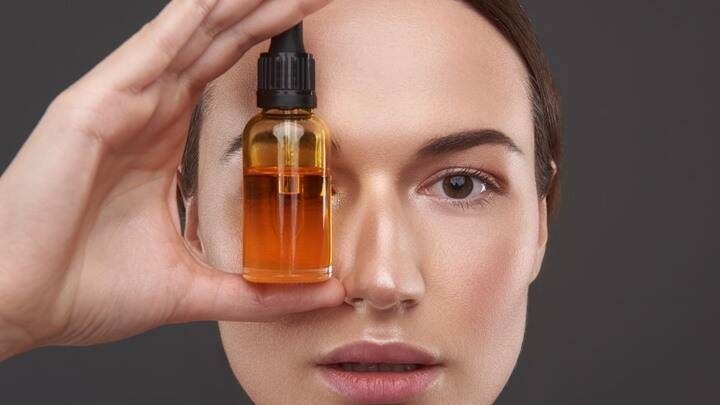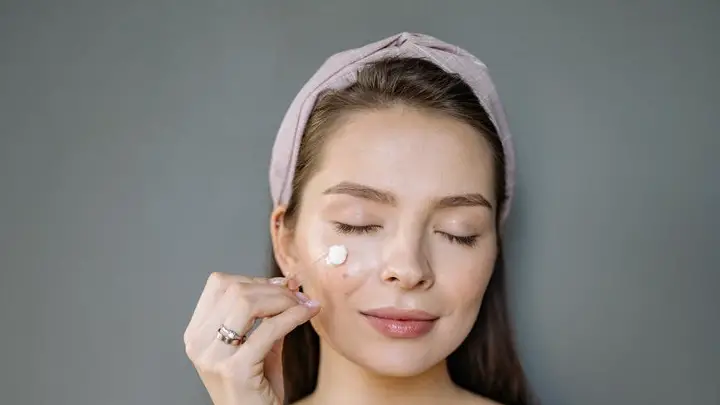Skincare powerhouses have a great reputation for putting an end to many skin worries. Nonetheless, there is a need to choose the ones that perfectly match your skin concerns. And this begs for a comparison like retinol vs hyaluronic acid.
Both ingredients have a relationship that stems from their potency of each and both in addressing issues like acne and signs of aging.
Still, you may want to know which one is better for your skin or you probably want a detailed list of the differences they share. Knowing their differences is more gratifying than seeking to know which is better.
Retinol and hyaluronic acid are two different ingredients that carry out different functions. Keep scrolling to see all you need to know about the comparison of retinol vs hyaluronic acid.
What Is Retinol?
Retinol is one of the synthetic vitamin A derivatives found in skincare products that are used to treat acne and signs of aging.
It is one of the active ingredients commonly found in skincare products that are touted to improve the appearance of your skin and mask signs of aging.
Skincare products like serums, creams, lotions, and oils that contain retinol help to increase cell turnover. As a result, topical application of these products can improve the appearance of fine lines and facial wrinkles.
Retinol is one ingredient that penetrates deep into your skin to work wonders. It is a powerful antioxidant that can protect your skin from the effect of environmental irritants that can cause premature aging.
Also, it has mild exfoliating properties with it helps to keep your pores unclogged, tighten pores, and regulate sebum production.
Moreover, by increasing cell turnover, it boosts collagen synthesis which helps to maintain skin elasticity and alleviate the dryness that leads to the formation of fine lines.
However, retinol can be too drying. If not followed up with a moisturizer, it can cause excessive dryness and skin irritations.
What Is Hyaluronic Acid?
Hyaluronic acid is a naturally occurring acid that can hold about 1000 times its weight in water. In the skincare world, it is called the hydrator. And this is not a myth or unproven fact. Hyaluronic acid is a humectant.
It attracts water molecules to your skin, pulls and retains the molecules in the outer layer of your skin. This ability is what makes the acid good for moisturizing and plumping the skin.
More so, the word acid should not deter you from using products that contain hyaluronic acid. Rather than exfoliating your skin, hyaluronic acid hydrates your skin.
It is a powerful ingredient in skin care products like toners, serums, moisturizers, other creams, and dermal fillers.
As a naturally occurring acid, it has tendencies of depleting and putting your skin on the path of dryness. You can counter this by using products that contain hyaluronic acid daily. Its moisturizing properties help to prevent and treat many skin problems.
Hyaluronic acid protects, soothes, plumps, and improves the overall health and appearance of your skin. Additionally, this acid is highly recommended by skincare experts for a wide range of uses that are beneficial for every skin type.
Retinol vs Hyaluronic Acid
1. Their nature
Retinol is a vitamin derivative while hyaluronic acid is a skincare acid. While hyaluronic acid can be a total darling, retinol has an infamous reputation and for this reason, you must have detailed knowledge about a retinol product before you use it.
In addition, hyaluronic acid has a moisturizing effect that is largely tolerated by every skin type. Retinol, on the other hand, is very sensitive to some skin types but this is not enough to disregard its potency as a powerful anti-aging ingredient.
Also, Retinol is a fat-soluble vitamin, and this makes it penetrate deep into your skin, unlike hyaluronic acid which sits on the surface of your skin.
Some face oils may contain retinol, but hyaluronic acid rather sticks to water-based products to carry out its moisturizing effect on your skin.
2. Functions
Both active ingredients work to maintain and improve your skin health, appearance, and texture but in different ways. As mentioned earlier, retinol penetrates the skin deeper than hyaluronic acid.
In the layers of your skin, retinol communicates skin rejuvenation to treat the signs of aging and restore your skin to its youth. Also, it helps to unclog your pores of debris that causes acne breakouts.
On the other hand, hyaluronic acid is the chief of moisture. It uses its humectant property to replenish moisture levels that may have depleted due to one reason or the other. Hyaluronic acid uses the same increase in moisture to prevent and address skin concerns.
Hyaluronic acid repairs and improves your natural barrier, increasing your skin’s resilience level against environmental irritants and microbes that can alter the texture and appearance of your skin.
Furthermore, hyaluronic acid is a complementary ingredient in acne treatment. It helps to treat acne by maintaining steady moisture levels and blocking the overproduction of sebum. Retinol is more of an acne treatment ingredient than hyaluronic acid.
Retinol tackles the factors that cause acne breakouts from the roots. It even prevents future acne breakouts.
In the deep layers of your skin, retinol stimulates collagen synthesis, which is necessary for filling acne scars, fading hyperpigmentation spots, and aligning your complexion.
Additionally, retinol stimulates the synthesis of proteins (collagen and elastin) that are necessary for skin elasticity while hyaluronic acid plumps your skin and maintains skin elasticity.
One more important difference to note is that the topical application of hyaluronic acid is more soothing to the skin than retinol.
3. Recommendations for use
Hyaluronic acid is largely tolerated by every skin type and one of the reasons for such a degree of compatibility is that it naturally occurs in the body. So, it is not foreign to your skin and does not trigger any concerns.
Therefore, even people with sensitive skin types can safely use hyaluronic acid and enjoy anti-inflammatory benefits.
Retinol may be good for every skin type especially if aging and acne are the major concerns of your skin. However, not every skin type can tolerate its potency. This is why it is advised that you pair retinol with a moisturizer for topical application.
You may go full-on hyaluronic acid usage even as a beginner but the same does not apply with retinol which should be introduced slowly.
Furthermore, hyaluronic acid should always be applied to damp skin for better results, but retinol should be applied to dry skin to lessen the risks of skin irritations.
You can safely use hyaluronic acid twice daily to increase moisture levels but using retinol more than once a day can be counterproductive. It may excessively dry out your skin and cause breakouts.
4. Side effects
As I said earlier, hyaluronic acid is largely tolerated by every skin type and as such does not cause any side effects. Meanwhile, you may experience a skin purge with retinol as part of the retinization process and because it is an ingredient that stimulates cell turnover.
However, you may experience a drying effect with hyaluronic acid if you overdo it or apply it to dry skin. In such a situation, the acid turns against your skin and strips it of moisture.
Can You Use Retinol Without Hyaluronic Acid?
Yes, you can use retinol without hyaluronic acid if you will use it with niacinamide, which is also a great skin hydrator.
Experts advise that you should always use a moisturizer after applying retinol. Otherwise, it will overly dry your skin and cause skin irritations.
But it is even better to pair retinol with hyaluronic acid and niacinamide to reap maximum benefits and push retinol to its peak.
Can You Use Hyaluronic Acid Without Retinol?
Yes, you can use hyaluronic acid without retinol or any other ingredient. Alone, it is very moisturizing and does not have any side effects.
Serums and moisturizers that contain hyaluronic acid are rather used to complement other ingredients and products that can throw your skin off balance.
Can You Use Retinol and Hyaluronic Acid Together?
Retinol and hyaluronic acid make a great pair to handle skin concerns like signs of aging and acne. Together, they improve the appearance and texture of your skin. Retinol is the one with side effects that hyaluronic acid helps to soothe.
Hyaluronic acid soothes your skin while it goes through the retinization process. Also, it helps enhance the penetration and action of retinol on your skin.
In tandem, they can help treat acne, heal acne scars and wounds, lessen inflammation, alleviate dryness, replenish and retain moisture, improve the appearance of fine lines and wrinkles, and protect your skin.
Overall, they give you healthy skin with an even skin tone and glowing complexion.
How to Layer Retinol With Hyaluronic Acid
- Start your routine by cleansing your face with a mild facial cleanser. Do not exfoliate your face as this can cause irritation
- Use a clean towel to dry your face; rather than rubbing your face with the towel, gently pat your face with the towel
- Thereafter, take a pea-sized amount of retinol cream and gently rub it on your face. Focus on the areas of acne, fine lines, and wrinkles
- Hold on for about 10-20 minutes to allow the cream to absorb into your skin
- Then, layer on hyaluronic acid moisturizer over your face to seal in moisture and counter the drying effect of retinol
- Although retinol is best used at night; if you’re layering retinol with hyaluronic acid in the morning, you must finish off your routine with sunscreen to shield your skin from sun damage
FAQs
Is retinol better than hyaluronic acid?
Retinol and hyaluronic acid are different ingredients with unique functions. While hyaluronic acid is good for moisture, retinol is a super anti-aging ingredient.
More so, they have certain abilities in common which make them excellent for your skin health. Choosing which of them is better depends on what your skin needs at the moment.
Should you apply retinol before or after hyaluronic acid?
Retinol should come before hyaluronic acid. Although people with sensitive skin types may need to pre-treat their skin with a hyaluronic acid-based moisturizer or serum before applying retinol. Most importantly, your skin should be dry before you apply retinol.
What ingredients should you not layer with retinol?
Retinol does not pair well with salicylic acid, benzoyl peroxide, vitamin C, glycolic acid, lactic acid, and any other ingredients that may dry out your skin. Layering retinol with any of these ingredients will cause your skin to dry out and cause irritations.
However, you may use them in the same routine but at alternate times of the day or week.
Conclusion
Comparing retinol vs hyaluronic acid is beneficial to help you know their differences and cancel your misconceptions about both ingredients. But if you’re looking to choose which is better for your skin concern, this comparison will help you.
However, if you choose to go with retinol to treat your acne and aging skin, you will need to go back and include hyaluronic acid. Pairing both ingredients helps to soothe the possible irritation using retinol comes with.
No one ingredient, on its own, is a one-size-fits-all remedy. They depend on each other to improve the health of your skin. The comparison, retinol vs hyaluronic acid, rather shows how interdependent both actives are in your skincare routine.
Thanks for reading.
Check Serum101 for related comparison articles that detail the differences between skincare powerhouse ingredients.







